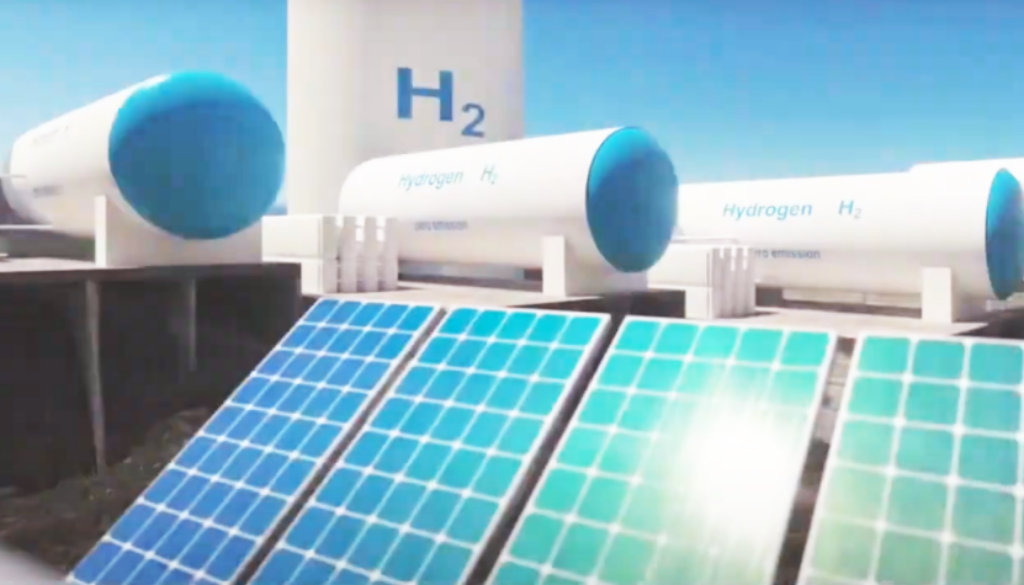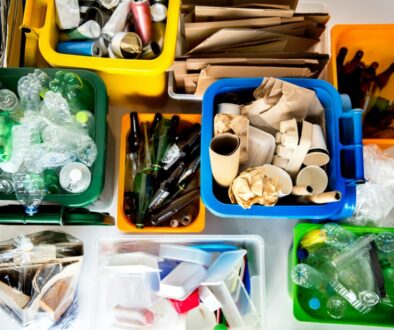A “grave concern” – fight building against Biden’s hydrogen hubs
By Dana Drugmand
When President Joe Biden visited Philadelphia in mid-October to announce a federal investment of more than $7 billion for seven regional ‘clean’ hydrogen hubs proposed across the country, he touted the promise of “tens of thousands of jobs” and the potential for sharp reductions in greenhouse gas emissions, equivalent to “taking 5.5 million gas-powered vehicles off the road.”
But for many climate and environmental advocates, the announcement was no cause for celebration. Though proponents of hydrogen pitch it as a clean alternative to fossil fuels, nearly all hydrogen production globally currently stems from these planet-warming fuels, and environmental advocates worry that a massive hydrogen buildout risks extending the fossil fuel era at a time when climate science demands an urgent transition away from coal, oil, and gas.
The hydrogen hubs “amount to another corporate scam”, Marion Gee, co-executive director at the Climate Justice Alliance, said at the time of Biden’s announcement, while Food and Water Watch Policy Director Jim Walsh called the project “greenwashed dirty energy [that] will undermine efforts to address the climate crisis.”
Now, some activist coalitions are challenging the government narrative and organizing efforts to block some hub buildouts. They cite a lack of transparency and the potential for negative environmental impacts among a list of concerns.
“It’s really a misappropriation of funds, of our taxpayer funds, to go down this hydrogen path,” said Tracy Carluccio, deputy director of the Delaware Riverkeeper Network, a regional environmental group focused on protecting the quality of the Delaware River watershed. “We’re going to be fighting it, and I think the public as a whole is going to be fighting these hydrogen hubs across the nation.”
The group is coordinating a sign-on letter to the US Department of Energy (DOE) expressing “grave concern” with a proposed hydrogen hub for the Mid-Atlantic region of the United States. The letter asserts that the government hub project amount to a “little known federal initiative that will have indelible impacts on our communities and the environment.”
A question of “clean”
The DOE’s Office of Clean Energy Demonstrations is overseeing the hydrogen hubs program. According to DOE, regional hydrogen hubs are “networks of clean hydrogen producers, consumers, and connective infrastructure” designed to help scale up the supply and use of hydrogen as an alternative fuel source. DOE considers hydrogen to be “clean” if it is either produced through electrolysis, which involves chemically splitting water molecules using technology powered by renewables or nuclear energy, or if conventional production methods from methane gas or other carbon-based feedstocks use carbon capture and storage.
At least four of the seven hydrogen hubs selected by DOE to begin funding negotiations plan to use natural gas for hydrogen production. When paired with carbon capture and storage, this production method is called blue hydrogen. But experts warn that blue hydrogen is not climate friendly, and a 2021 study suggests its greenhouse gas footprint may be higher than simply burning fossil fuels. The use of blue hydrogen “appears difficult to justify on climate grounds,” the authors of the 2021 study wrote.
Even the hubs that supposedly would not use any fossil fuels in the hydrogen production, however, could still end up relying on blue hydrogen at least initially, critics fear. So-called green hydrogen made through electrolysis powered by renewables is currently expensive, energy-intensive, and does not yet exist on any relevant scale. Blue hydrogen is seen by some, particularly in the gas industry, as a kind of “bridge fuel” to the green version. Yet this vision risks locking in even more fossil fuel usage and production infrastructure, which is completely different from the production infrastructure needed for green hydrogen.
One of the few hubs that proponents say will be completely “green” is the Mid-Atlantic Clean Hydrogen Hub (MACH2). Comprised of 17 sites spanning southeastern Pennsylvania, southern New Jersey, and Delaware, the Mid-Atlantic hub plans to produce 100,000 tons per year of hydrogen for use in manufacturing and industrial processes, heavy transportation, and combined heat and power.
The hub aims to expand hydrogen distribution infrastructure, including developing vehicle fueling stations, and plans to repurpose existing and aging oil infrastructure.
During a virtual community briefing about the MACH2 hosted by DOE in October, project board chair Collin O’Mara repeatedly stated that the hub would involve no fossil fuels for hydrogen production, calling it a fossil fuel-free hub.” The hydrogen production, according to O’Mara, will be mostly through electrolysis, powered by both renewable energy and nuclear. He said a small percentage would be produced using waste biomethane from a wastewater treatment plant in Philadelphia equipped with carbon capture.
“We want to be the model for the country,” O’Mara said in the October briefing. But some environmental advocates say there is reason to doubt the accuracy of those assurances.
An internal abstract submitted to DOE on November 7, 2022 for the first stage of the funding application process shows that ‘blue’ hydrogen from fracked gas with carbon capture is a key component of the MACH2 project and will be the hub’s first product.
“From conversations [advocates have had] with folks directly involved in the hub, it definitely sounds like they are not just looking at green hydrogen. It sounds like they are leaving the door open for blue hydrogen,” said Abbe Ramanan, project director focused on hydrogen at Clean Energy Group.
Delaware Riverkeeper Network has submitted Freedom of Information Act (FOIA) requests to DOE seeking an updated project abstract to confirm whether or not the plan has changed. O’Mara did not respond to questions about the current hub proposal.
Critics say they are not being given adequate information about the hubs, and the potential impacts and the lack of transparency is a big concern for community and environmental activists in the region.
“We can’t determine what the impacts are if we don’t have all the information,” said Carluccio. “It’s a lot easier for them to move forward without the public involved.”
Bloomberg reported this week that secrecy surrounding hub project negotiations is becoming a serious “sticking point” with many communities.
Waste and water issues
A key concern is waste. Hydrogen created using nuclear energy, dubbed “pink hydrogen,” is included in the MACH2 proposal for roughly 20% of the planned production. While nuclear is a carbon-free source of energy, it comes with significant waste disposal issues and its role in the clean energy transition remains controversial.
The Salem Nuclear Generating Station in New Jersey has already damaged the Delaware River ecosystem and is responsible for the loss of more than 14 billion fish, eggs and larvae each year, according to Delaware Riverkeeper Network. The station is expected to be a supplier of nuclear power for MACH2, and extending its lifespan would “be absolutely devastating” for the Delaware River watershed, Carluccio said.
“It’s going to have a direct effect on people’s health, on water quality, on fish and wildlife and ecosystems throughout the watershed, all of this is going to be affected,” she said.
Under the Treasury Department’s newly proposed guidelines for claiming the clean hydrogen production tax credit, however, existing nuclear generators like the decades-old Salem station may not qualify for the federal incentive. The guidelines propose that clean power for hydrogen production be “new”, meaning beginning commercial operation within three years of the hydrogen facility being put into service.
Water withdrawals for hydrogen production amount to another concern. Whether powered by nuclear or renewable energy, each ton of hydrogen produced would require up to 9 tons of water twice that amount (up to 18 tons) if the water has to be purified.
“I think people tend to underestimate just how much water you need,” said Ramanan.
Producing hydrogen through electrolysis is also energy intensive and some of the renewable energy that goes into production is lost due to inherent inefficiencies.
“We’re not really producing anywhere near the renewable electricity we would need to power green hydrogen in the first place,” Karen Feridun of Better Path Coalition said in a December webinar about the MACH2 hub.
Additional concerns with hydrogen include leakage, combustion and transportation. Hydrogen is especially leak-prone because the molecule is so small, and if it escapes into the atmosphere it can impact greenhouse gases like methane. “All hydrogen regardless of how it’s produced is an indirect greenhouse gas,” Ramanan explained. Furthermore, if hydrogen is combusted it results in about six times the amount of nitrogen oxide (NOx) compared to burning methane. Nitrogen oxides are a precursor to smog and can cause respiratory ailments and other health impacts. And given that hydrogen needs to be highly pressurized for transport, typical steel pipelines are not engineered to withstand that pressure. “Any hydrogen cannot be run through existing pipelines safely,” Ramanan said.
This raises further concerns for the Mid-Atlantic Clean Hydrogen Hub, which aims to make use of existing oil infrastructure, according to a MACH2 brochure.
Ramanan acknowledged that green hydrogen could have some beneficial uses, particularly for hard-to-decarbonize sectors such as cement manufacturing or aviation, or potentially for renewable energy storage through fuel cells. But, she said, “it has a pretty limited role, and definitely not one that would merit the scale of the buildout we’re seeing.”




